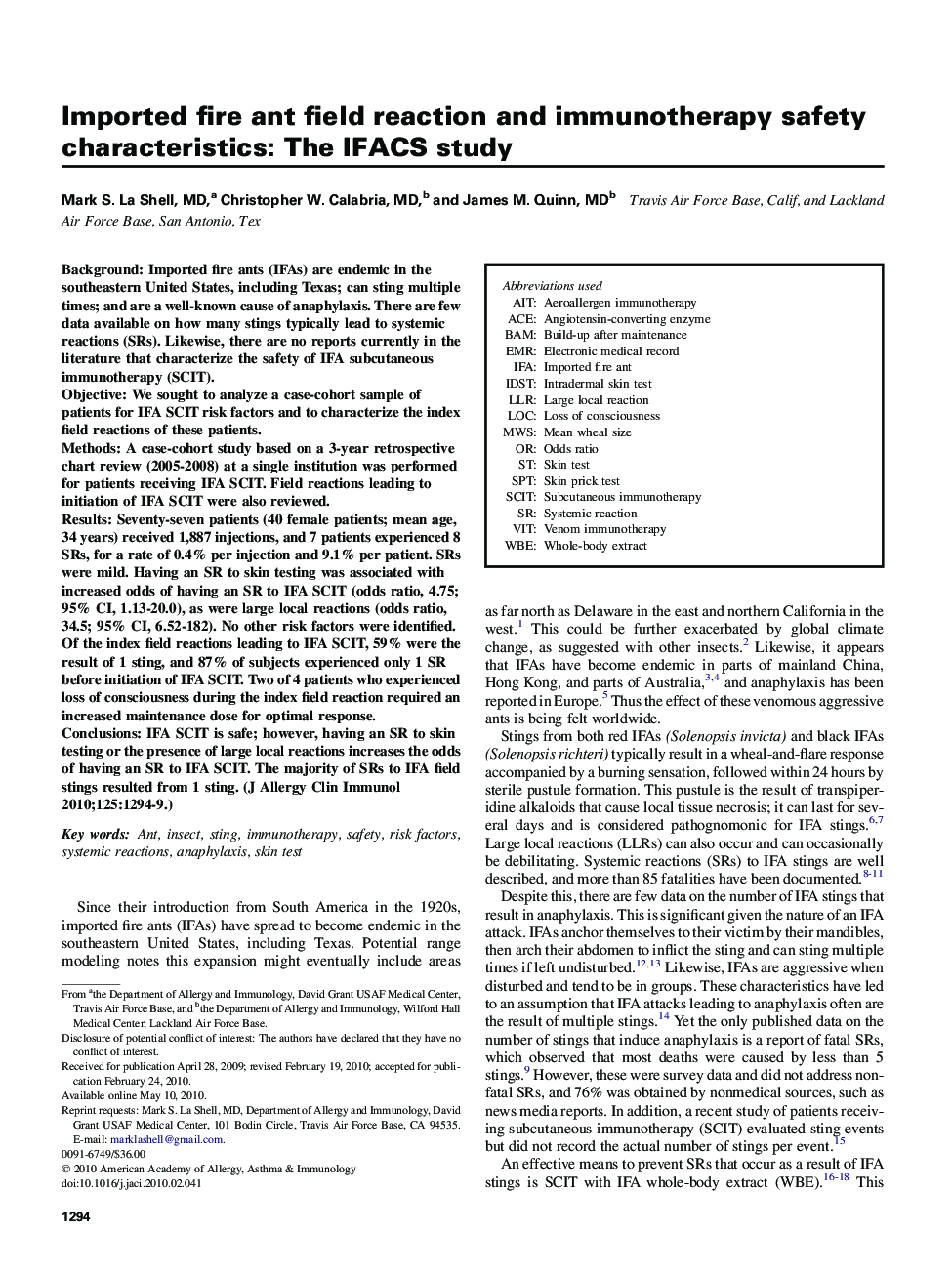| Article ID | Journal | Published Year | Pages | File Type |
|---|---|---|---|---|
| 6067705 | Journal of Allergy and Clinical Immunology | 2010 | 6 Pages |
BackgroundImported fire ants (IFAs) are endemic in the southeastern United States, including Texas; can sting multiple times; and are a well-known cause of anaphylaxis. There are few data available on how many stings typically lead to systemic reactions (SRs). Likewise, there are no reports currently in the literature that characterize the safety of IFA subcutaneous immunotherapy (SCIT).ObjectiveWe sought to analyze a case-cohort sample of patients for IFA SCIT risk factors and to characterize the index field reactions of these patients.MethodsA case-cohort study based on a 3-year retrospective chart review (2005-2008) at a single institution was performed for patients receiving IFA SCIT. Field reactions leading to initiation of IFA SCIT were also reviewed.ResultsSeventy-seven patients (40 female patients; mean age, 34 years) received 1,887 injections, and 7 patients experienced 8 SRs, for a rate of 0.4% per injection and 9.1% per patient. SRs were mild. Having an SR to skin testing was associated with increased odds of having an SR to IFA SCIT (odds ratio, 4.75; 95% CI, 1.13-20.0), as were large local reactions (odds ratio, 34.5; 95% CI, 6.52-182). No other risk factors were identified. Of the index field reactions leading to IFA SCIT, 59% were the result of 1 sting, and 87% of subjects experienced only 1 SR before initiation of IFA SCIT. Two of 4 patients who experienced loss of consciousness during the index field reaction required an increased maintenance dose for optimal response.ConclusionsIFA SCIT is safe; however, having an SR to skin testing or the presence of large local reactions increases the odds of having an SR to IFA SCIT. The majority of SRs to IFA field stings resulted from 1 sting.
